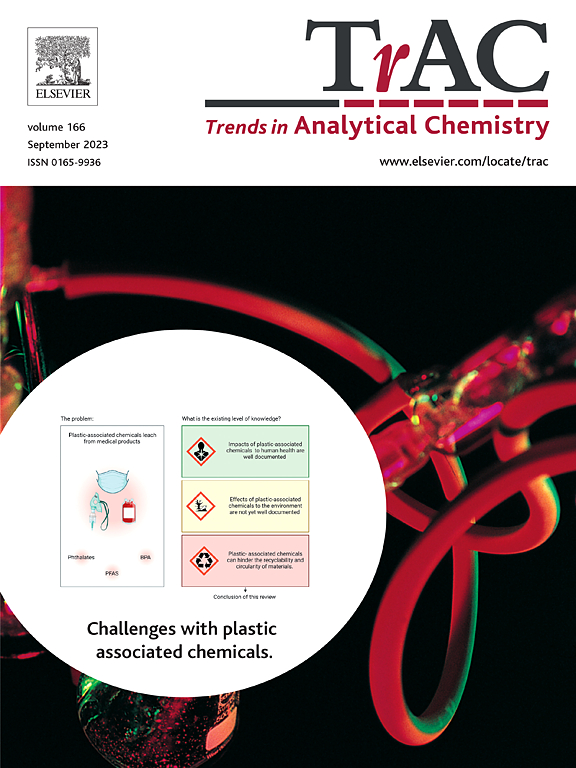Novel reporter based on Aggregation-induced emission Luminogens for lateral flow immunoassay: A mini review
IF 11.8
1区 化学
Q1 CHEMISTRY, ANALYTICAL
引用次数: 0
Abstract
Fluorescent lateral flow immunoassay (LFIA), known for their robust signal-readout capabilities, is approximately 1–2 orders of magnitude more sensitive than traditional LFIA. However, most fluorescent materials suffer from aggregation-caused quenching (ACQ) at high concentration, which restricted the performance of these fluorescent reporters. Aggregation-induced emission luminogens (AIEgens) against ACQ have demonstrated exceptional optical performance, garnering significant attentions in immunoassay. Here, we have conducted an extensive review of AIEgens-based LFIA in three main aspects: (1) AIE-based reporters including single AIEgens, non-dyes typed AIE materials, and AIEgens-loading typed fluorescent microspheres; (2) coupling strategies including electrostatic adsorption, EDC method, oriented antibody coupling, and surface modifications; (3) potential typed AIE-LFIAs including molecular engineering, AIEgens doping, and novel confinement strategy for AIEgens. Especially, the future challenges and perspectives of AIEgens-based LFIA are also discussed in detail, aiming to provide guidance for the development of high-performance AIEgens-based LFIA in wide application field.

基于聚集诱导发射发光原的侧流免疫分析新报告:综述
荧光侧流免疫测定(LFIA)以其强大的信号读出能力而闻名,其灵敏度比传统的LFIA高约1-2个数量级。然而,大多数荧光材料在高浓度时会发生聚集致猝灭(ACQ),这限制了这些荧光报告材料的性能。针对ACQ的聚集诱导发射发光原(AIEgens)表现出优异的光学性能,在免疫分析中引起了极大的关注。本文主要从三个方面对AIEgens型荧光微球进行了综述:(1)AIEgens型荧光微球包括单个AIEgens、非染料型AIE材料和AIEgens负载型荧光微球;(2)偶联策略包括静电吸附、EDC法、定向抗体偶联和表面修饰;(3)潜在类型AIE-LFIAs包括分子工程、AIEgens掺杂和AIEgens新型约束策略。详细讨论了基于aiegens的LFIA未来面临的挑战和发展前景,旨在为基于aiegens的高性能LFIA在广泛应用领域的发展提供指导。
本文章由计算机程序翻译,如有差异,请以英文原文为准。
求助全文
约1分钟内获得全文
求助全文
来源期刊

Trends in Analytical Chemistry
化学-分析化学
CiteScore
20.00
自引率
4.60%
发文量
257
审稿时长
3.4 months
期刊介绍:
TrAC publishes succinct and critical overviews of recent advancements in analytical chemistry, designed to assist analytical chemists and other users of analytical techniques. These reviews offer excellent, up-to-date, and timely coverage of various topics within analytical chemistry. Encompassing areas such as analytical instrumentation, biomedical analysis, biomolecular analysis, biosensors, chemical analysis, chemometrics, clinical chemistry, drug discovery, environmental analysis and monitoring, food analysis, forensic science, laboratory automation, materials science, metabolomics, pesticide-residue analysis, pharmaceutical analysis, proteomics, surface science, and water analysis and monitoring, these critical reviews provide comprehensive insights for practitioners in the field.
 求助内容:
求助内容: 应助结果提醒方式:
应助结果提醒方式:


